Sunday, August 19, 2007
What really is ubiquitous in Venezuela
After more than four years the social missions, or just “Missiones”, of Chavez’s government are quite famous. And of all the Missiones none is more famous than Barrio Adentro (Inside the Neighborhood) which brought Cuban doctors to provide free medical care in the poorer areas of Venezuela.
If you are like me, when thinking about Barrio Adentro you still visualize a small brick building, similar to the one below, that symbolized very rudimentary medical care.

Of course, I knew that Barrio Adentro had now moved on to additional phases with each additional phase moving on to the provision of more sophisticated care. For example, Barrio Adentro II moved on to something called Integral Diagnostic Centers (CDI by its Spanish acronym). These centers, as the name implies, offer the full range of diagnostic and treatment equipment which would allow all but the most serious conditions to be treated. In effect they are mini hospitals.
Yet it is one thing to have heard of them and even seen pictures of them on the internet and another thing to actually bump into them all over the place.
My first encounter with one was when a person with whom I was staying had an asthma attack and needed immediate medical attention. She was quickly taken the nearest CDI in the nearby town of Tamaca which is about 15 miles north of Barquisimeto. It took about 10 minutes to get there which pointed up the first benefit of these centers – their proximity and accessibility. The second benefit, given that this occurred at about 8 p.m., was that these centers are open 24/7. But more on all that later.
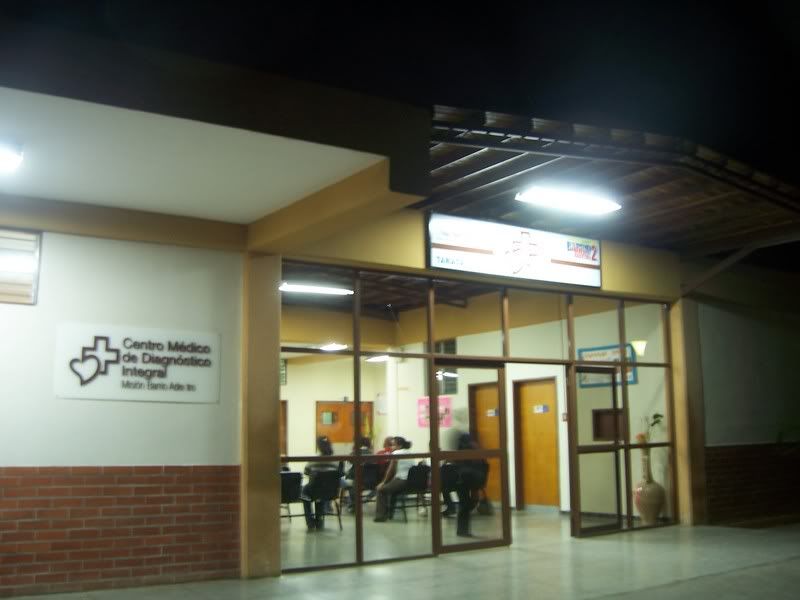
The asthma attack was promptly treated and she was able to go home after only about an hour and a half. Unfortunately, CDI administrators aren’t big on people taking pictures inside the facilities so the only pictures I took were of the waiting area. But what I saw was a brand new and immaculate facility that would be right at home in any U.S. hospital (disclosure: I have worked extensively in the U.S. healthcare system and therefore am intimately familiar with what similar facilities in the U.S. would be like). It had a full x-ray room, sonogram machines, EKGs, and all standard laboratory equipment. It had rooms with patient beds and about a half dozen physicians in addition to nurses and technicians. It also had a dispensary where medications were given out at low or no cost to patients.
Oh, and there is some value to checking out the front desk photos so here is one:

Does anything jump at you? Something sure did for me. Namely that the front desk is not staffed. In fact, in going to other CDIs I’ve never seen more than one person at the front desk. This is in marked contrast to the U.S. were there are all sorts of little bureaucrats scurrying around in the front of clinics.
There are two reasons these centers only need doctors and nurses, and not costly bureaucrats and clerks. First, these don’t maintain medical records in these centers. If you have an X-ray done it isn’t stored in this facility – you take it with you. Same for any notes the physician writes up and any lab results. It is your responsibility to keep your own records and bring them to any other medical provider who might need them. This is true throughout almost the entire Venezuelan medical system, it is not something new or unique to these CDIs. Still it does serve to cut down on waste full staffing.
The second, and more important reason, is that all services offered by these centers are absolutely free to anyone who shows up. In the U.S. a good share of the staff in hospitals are there to make sure no-one who can’t pay sneaks in and gets medical care. In the Barrio Adentro program where all care is free there is no need for such people.
It really took my breath away to see what a clinic looked like when it didn’t have all those truly unnecessary staff. I have spent a lot of time wondering how much money they save by not having them.
What they did have in the waiting area was plenty of educational posters and literature on subjects ranging from pre-natal care to dengue fever. Here is one on family planning:
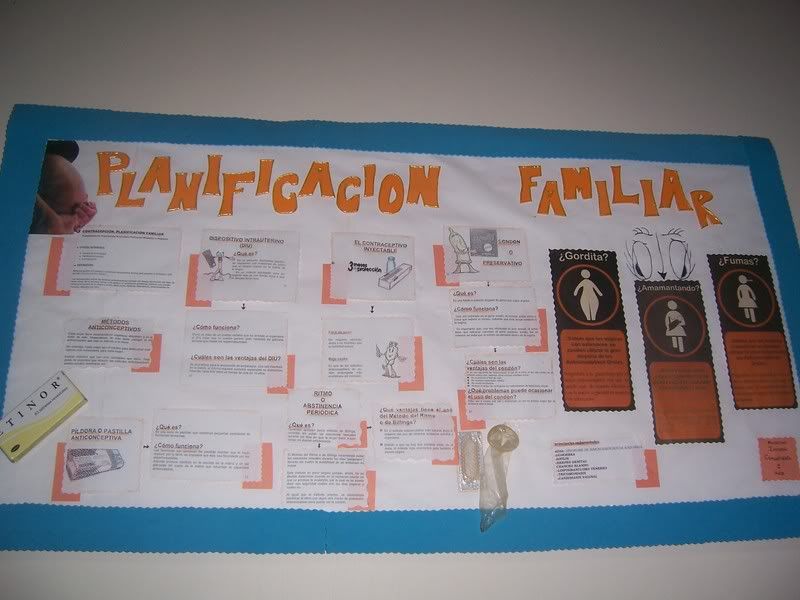
The next day while traveling out to the new soccer stadium in Cabadure I stopped to check out some of the nice new housing that the government had recently built in the area:

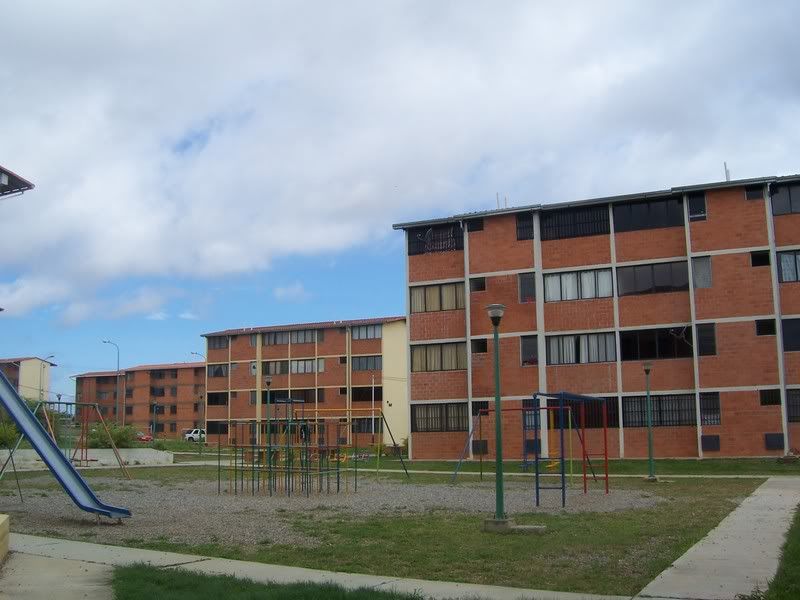
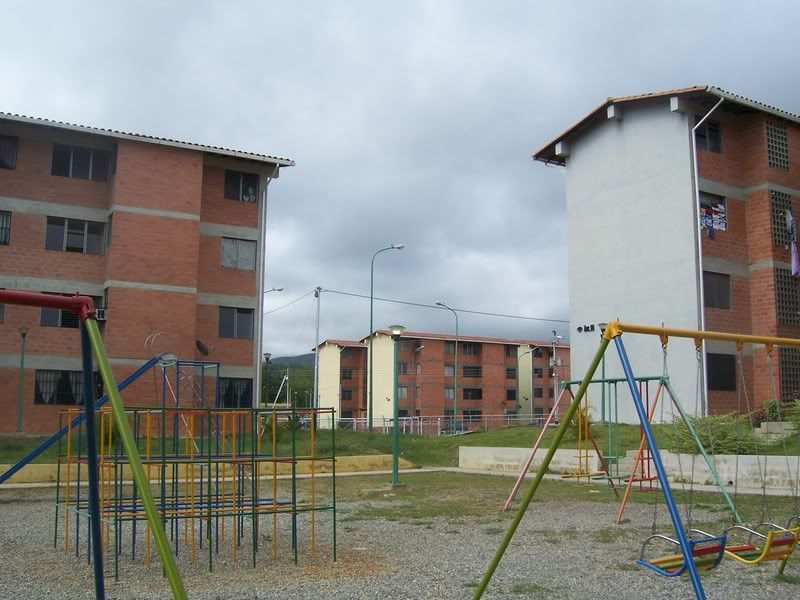
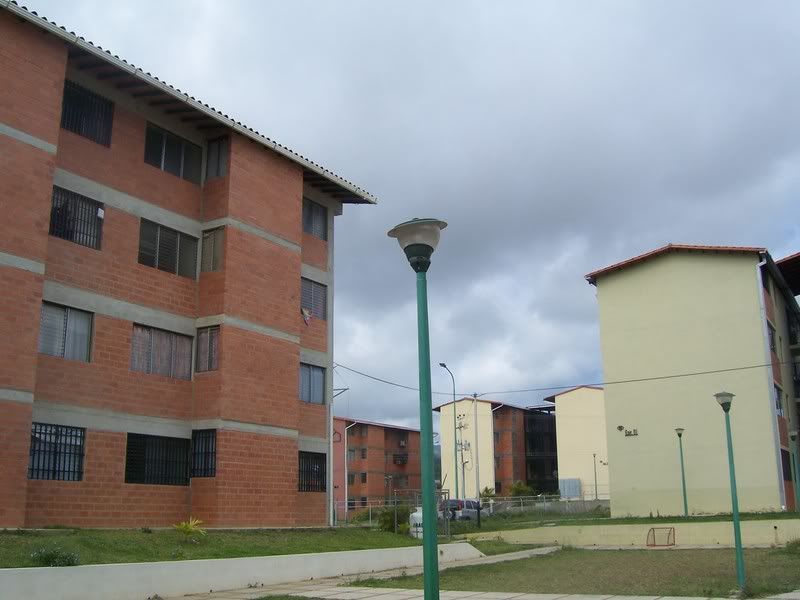
After wandering around this complex a bit something caught my eye – some more medical buildings right across the street.
The first was an Integrated Rehabilitation Center (SRI in Spanish) which is also part of the Barrio Adentro II program.
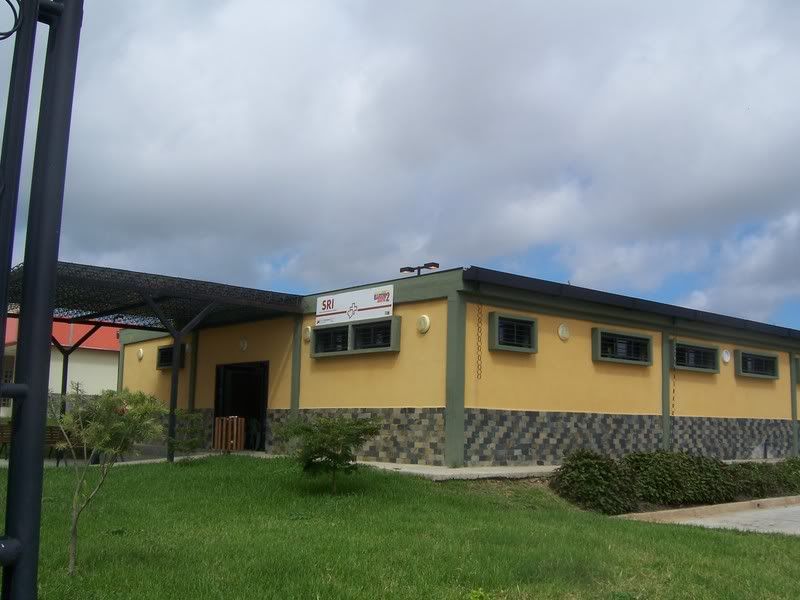

Again, there is no security so you can just walk in, look around and talk to people. Just as in Tamaca the facility was quite impressive. In fact, with smoke detectors, sprinklers, and polished marble floors it was very unthird-worldish. One thing that is very evident in five minutes of checking out these facilities is that no shortcuts were taken in building these centers just so the government could say it built something. Like the government built housing I have also seen, they are first rate.
With no staff members looking on I even managed to snap a couple of pictures of rehabilitation rooms:
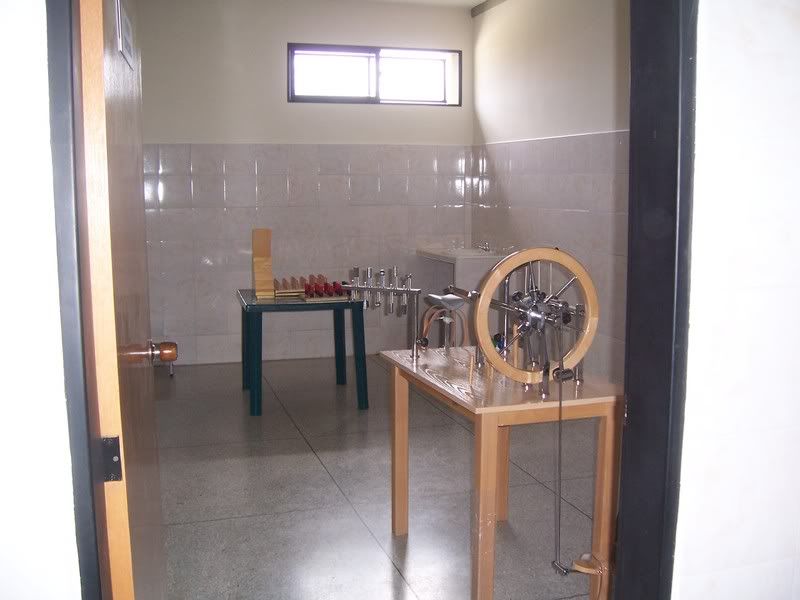
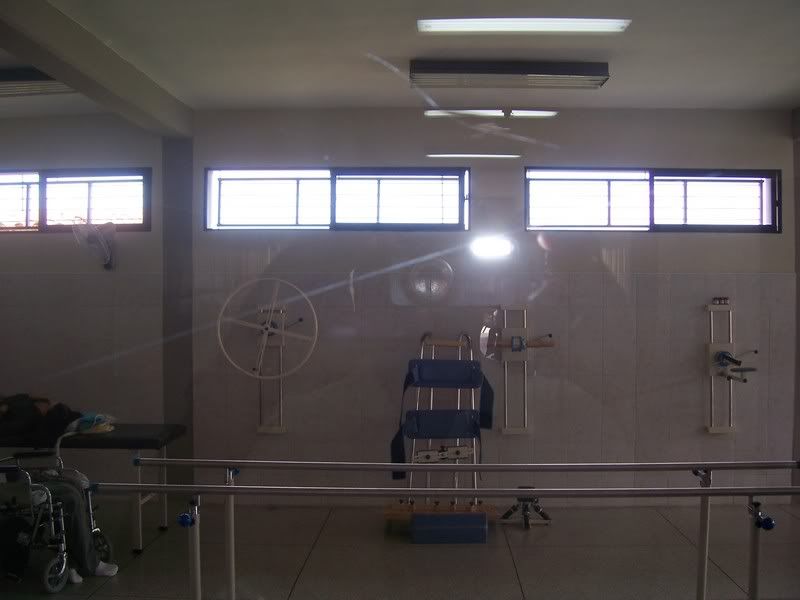
Now while the staff didn’t want pictures being taken the patients waiting in the hallway didn’t seem to mind and were quite talkative. They talked about how this physical therapy center provides them with services which they never previously had access to. The recounted the story of one man severely injured in a car accident many years ago who had never received any physical therapy and was bed-ridden. After months of therapy in this center he was able to move around in a wheel chair which was also provided to him by the Barrio Adentro program. I was told other similar stories and was also told for very serious cases people were sent to Cuba for more advanced treatment.
Speaking to the patients another difference between these Venezuelan clinics and ones in the U.S. became obvious. In the U.S. patients are often sullen and short tempered and quite unlikely to make conversation with a stranger. In contrast, Venezuelans waiting in these centers seemed amazingly cheerful for people who are presumably sick. I can’t be sure why that is, but my best guess is that they were very pleased to finally have access to quality health care.
Right next door was yet another CDI:
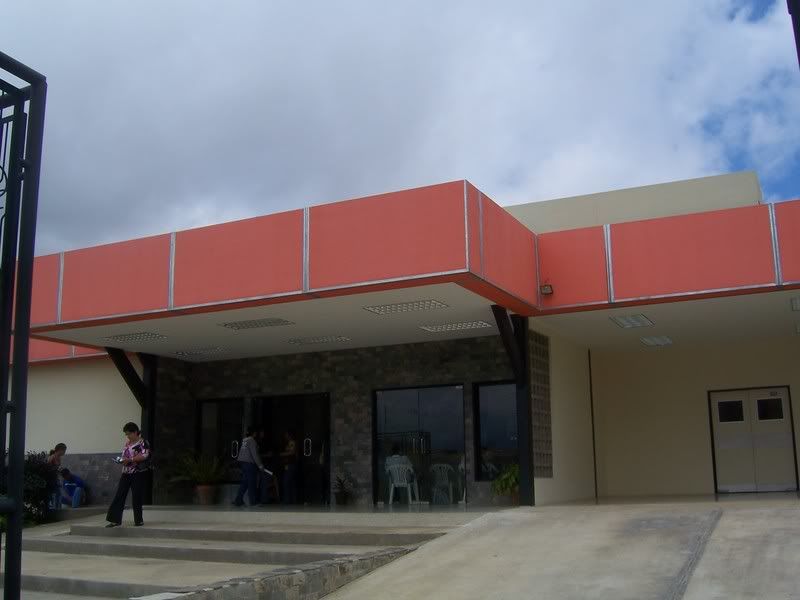
And in spite of the supposed lack of transparency in Venezuela they put signs out front saying what company built it and how much it cost:
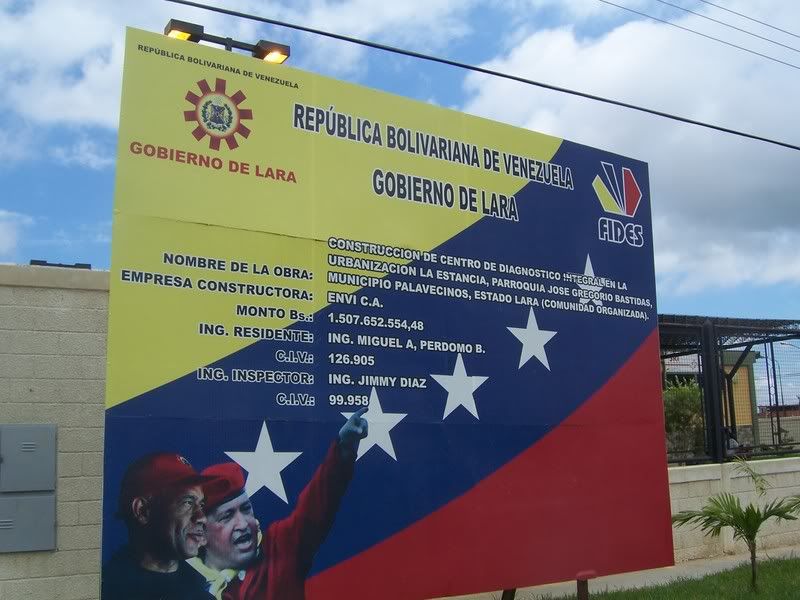
Just traveling around Barquisimeto I have probably seen 4 or 5 of these CDIs. In fact, 26 have been built for the Baquisimeto metro area which has approximately 1 million people. This means virtually every neighborhood has one of these mini-hospitals.
That is quite important because before the CDIs were built there was only one main hospital in the entire city and any acutely ill person had to go to that hospital for treatment. Getting there through the city’s traffic choked streets could take up to an hour and once there patients were faced with tremendous overcrowding, long waits, shortages of supplies, and indifferent care on the part of doctors (who according to everyone I’ve talked to were almost always more interested in getting bribes than actually treating patients – for that reason Venezuelans LOVE the Cuban doctors who staff the Barrio Adentro centers). Now, thanks to these CDIs, people all over Venezuela have easy access to quality medical care.
The CDIs and SRIs of the second phase of the Barrio Adentro program are very impressive. They are highly popular with the millions of Venezuelans who use them. They are also ubiquitous and you really can’t travel very far before running into them.
And that last point makes me wonder how it is that some in the media try to present the handful of Hummers running around Venezuela as the image of what is going on in that country rather than the much more prevalent works of the Barrio Adentro II program which impact the lives of so many Venezuelans in such a positive way.
|
If you are like me, when thinking about Barrio Adentro you still visualize a small brick building, similar to the one below, that symbolized very rudimentary medical care.

Of course, I knew that Barrio Adentro had now moved on to additional phases with each additional phase moving on to the provision of more sophisticated care. For example, Barrio Adentro II moved on to something called Integral Diagnostic Centers (CDI by its Spanish acronym). These centers, as the name implies, offer the full range of diagnostic and treatment equipment which would allow all but the most serious conditions to be treated. In effect they are mini hospitals.
Yet it is one thing to have heard of them and even seen pictures of them on the internet and another thing to actually bump into them all over the place.
My first encounter with one was when a person with whom I was staying had an asthma attack and needed immediate medical attention. She was quickly taken the nearest CDI in the nearby town of Tamaca which is about 15 miles north of Barquisimeto. It took about 10 minutes to get there which pointed up the first benefit of these centers – their proximity and accessibility. The second benefit, given that this occurred at about 8 p.m., was that these centers are open 24/7. But more on all that later.

The asthma attack was promptly treated and she was able to go home after only about an hour and a half. Unfortunately, CDI administrators aren’t big on people taking pictures inside the facilities so the only pictures I took were of the waiting area. But what I saw was a brand new and immaculate facility that would be right at home in any U.S. hospital (disclosure: I have worked extensively in the U.S. healthcare system and therefore am intimately familiar with what similar facilities in the U.S. would be like). It had a full x-ray room, sonogram machines, EKGs, and all standard laboratory equipment. It had rooms with patient beds and about a half dozen physicians in addition to nurses and technicians. It also had a dispensary where medications were given out at low or no cost to patients.
Oh, and there is some value to checking out the front desk photos so here is one:

Does anything jump at you? Something sure did for me. Namely that the front desk is not staffed. In fact, in going to other CDIs I’ve never seen more than one person at the front desk. This is in marked contrast to the U.S. were there are all sorts of little bureaucrats scurrying around in the front of clinics.
There are two reasons these centers only need doctors and nurses, and not costly bureaucrats and clerks. First, these don’t maintain medical records in these centers. If you have an X-ray done it isn’t stored in this facility – you take it with you. Same for any notes the physician writes up and any lab results. It is your responsibility to keep your own records and bring them to any other medical provider who might need them. This is true throughout almost the entire Venezuelan medical system, it is not something new or unique to these CDIs. Still it does serve to cut down on waste full staffing.
The second, and more important reason, is that all services offered by these centers are absolutely free to anyone who shows up. In the U.S. a good share of the staff in hospitals are there to make sure no-one who can’t pay sneaks in and gets medical care. In the Barrio Adentro program where all care is free there is no need for such people.
It really took my breath away to see what a clinic looked like when it didn’t have all those truly unnecessary staff. I have spent a lot of time wondering how much money they save by not having them.
What they did have in the waiting area was plenty of educational posters and literature on subjects ranging from pre-natal care to dengue fever. Here is one on family planning:

The next day while traveling out to the new soccer stadium in Cabadure I stopped to check out some of the nice new housing that the government had recently built in the area:




After wandering around this complex a bit something caught my eye – some more medical buildings right across the street.
The first was an Integrated Rehabilitation Center (SRI in Spanish) which is also part of the Barrio Adentro II program.


Again, there is no security so you can just walk in, look around and talk to people. Just as in Tamaca the facility was quite impressive. In fact, with smoke detectors, sprinklers, and polished marble floors it was very unthird-worldish. One thing that is very evident in five minutes of checking out these facilities is that no shortcuts were taken in building these centers just so the government could say it built something. Like the government built housing I have also seen, they are first rate.
With no staff members looking on I even managed to snap a couple of pictures of rehabilitation rooms:


Now while the staff didn’t want pictures being taken the patients waiting in the hallway didn’t seem to mind and were quite talkative. They talked about how this physical therapy center provides them with services which they never previously had access to. The recounted the story of one man severely injured in a car accident many years ago who had never received any physical therapy and was bed-ridden. After months of therapy in this center he was able to move around in a wheel chair which was also provided to him by the Barrio Adentro program. I was told other similar stories and was also told for very serious cases people were sent to Cuba for more advanced treatment.
Speaking to the patients another difference between these Venezuelan clinics and ones in the U.S. became obvious. In the U.S. patients are often sullen and short tempered and quite unlikely to make conversation with a stranger. In contrast, Venezuelans waiting in these centers seemed amazingly cheerful for people who are presumably sick. I can’t be sure why that is, but my best guess is that they were very pleased to finally have access to quality health care.
Right next door was yet another CDI:

And in spite of the supposed lack of transparency in Venezuela they put signs out front saying what company built it and how much it cost:

Just traveling around Barquisimeto I have probably seen 4 or 5 of these CDIs. In fact, 26 have been built for the Baquisimeto metro area which has approximately 1 million people. This means virtually every neighborhood has one of these mini-hospitals.
That is quite important because before the CDIs were built there was only one main hospital in the entire city and any acutely ill person had to go to that hospital for treatment. Getting there through the city’s traffic choked streets could take up to an hour and once there patients were faced with tremendous overcrowding, long waits, shortages of supplies, and indifferent care on the part of doctors (who according to everyone I’ve talked to were almost always more interested in getting bribes than actually treating patients – for that reason Venezuelans LOVE the Cuban doctors who staff the Barrio Adentro centers). Now, thanks to these CDIs, people all over Venezuela have easy access to quality medical care.
The CDIs and SRIs of the second phase of the Barrio Adentro program are very impressive. They are highly popular with the millions of Venezuelans who use them. They are also ubiquitous and you really can’t travel very far before running into them.
And that last point makes me wonder how it is that some in the media try to present the handful of Hummers running around Venezuela as the image of what is going on in that country rather than the much more prevalent works of the Barrio Adentro II program which impact the lives of so many Venezuelans in such a positive way.
|
